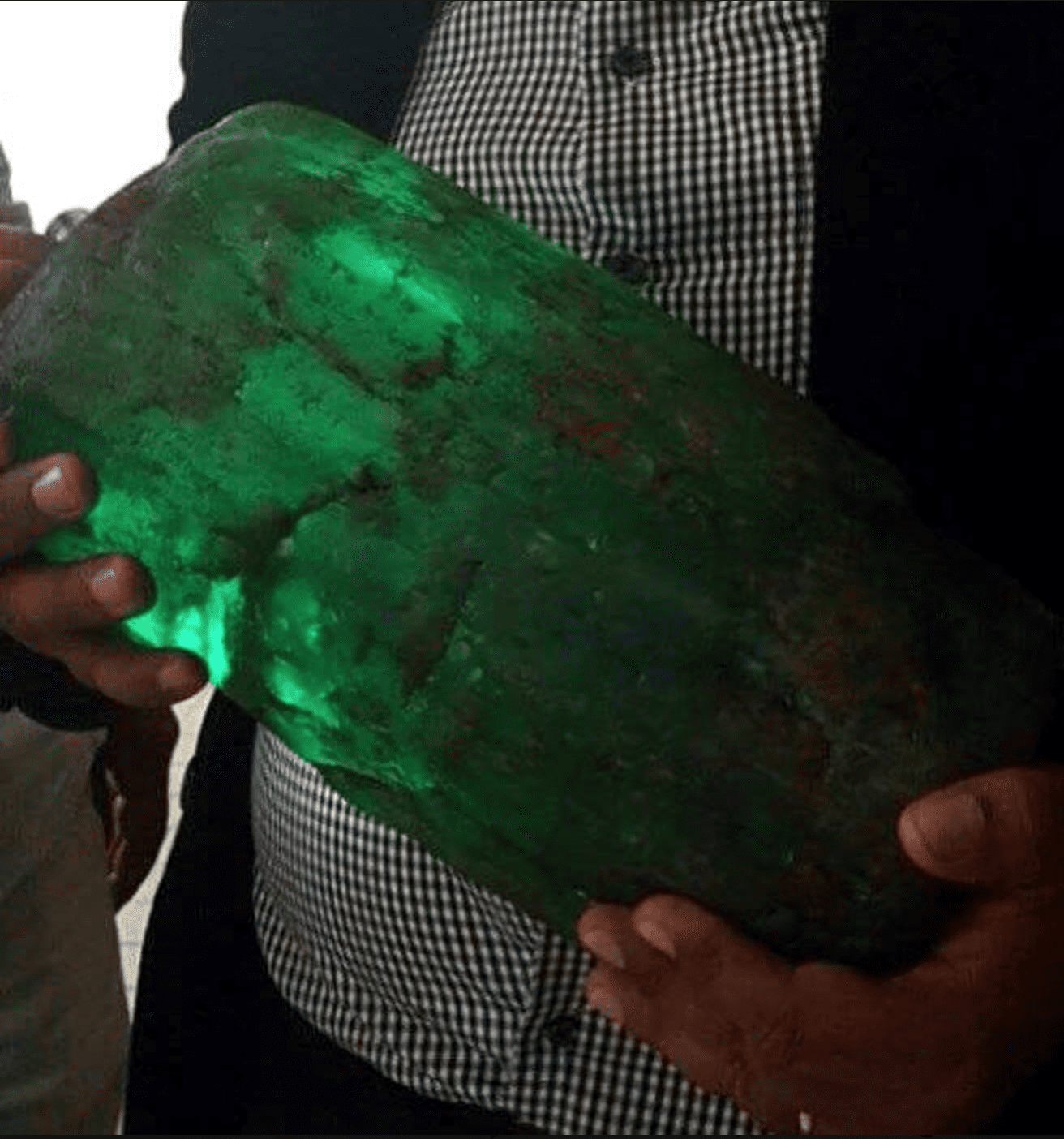Fake News in the Gem Trade: A Waterworn Emerald from Chivor?
A number of online sites have reported on a large emerald, supposedly recently extracted from the Chivor mine in Colombia. However, is this apparently waterworn emerald really from Chivor (and is it really an emerald) or is it just fake news?
1 Minute Read
What Should Chivor Emeralds Look Like?
To experienced gemologists or geologists, the first clue this was a bogus story is obvious. The specimen in question has a rounded surface, thus indicating it came from a waterworn, alluvial deposit. However, the Chivor mine in Colombia is a hard rock deposit. This means emeralds extracted from it will have sharp, angular crystal faces rather than rounded surface features.
A Waterworn Emerald from Madagascar?
Over a decade ago, several exceptionally large, waterworn emerald crystals were reported from Madagascar. At the time, there was general uncertainty regarding their identity. Did they actually qualify as emeralds or were they more properly classified as just green beryls?
To my knowledge, the only gemological laboratory that identified them as emeralds was the International Gemological Institute (IGI) in Antwerp, Belgium. However, the IGI didn't issue an opinion on origin.
Are These the Same Crystals?
Although it's impossible to determine if the specimen in the 2007 IGI report is the same crystal as the one reported by JR Colombian Emeralds via Amazing Geologist, they do have some remarkable similarities. The two crystals have virtually identical hue, tone, and saturation. They also both have waterworn rounded surface features as well as distinct orangey yellow iron oxide staining.
I conclude that the claim by JR Colombian Emeralds via Amazing Geologist that the specimen was "recently extracted from the Chivor mine in Colombia" is, indeed, fake news.
Editor's note: For a list of some of the largest known emeralds, see this article by Mr. Bergman.
Jeffery Bergman, SSEF SGC
Jeffery Bergman, SSEF SGC, founder and director of 8th Dimension Gems in Thailand, is an American gem dealer with more than 40 years of experience in gemstone and fine jewelry mining, cutting, wholesaling and retailing. His career has taken him to more than 50 countries and every continent except Antarctica. He has appeared on the BBC, CNN, NBC, ABC and GEO; and has been featured in Time, USA Today, National Geographic, Gems & Gemology and Discovery Channel magazine. He is a regular guest speaker at gem lab seminars and gemological association conferences and universities.
Related Articles
Emerald Value, Price, and Jewelry Information
Do Emeralds and Peridots Look Good Together?
What is a Trapiche Emerald?
Is the 500-Pound Beleza Emerald Really Worth $280 million?
Latest Articles
Quartz Toxicity: Understanding the Risks for Jewelers and Wearers
Synthetic Amethyst: What is it and How is it Made?
Hambergite Value, Price, and Jewelry Information
Pearl Simulants: How to Spot Faux Pearls
Never Stop Learning
When you join the IGS community, you get trusted diamond & gemstone information when you need it.
Get Gemology Insights
Get started with the International Gem Society’s free guide to gemstone identification. Join our weekly newsletter & get a free copy of the Gem ID Checklist!
